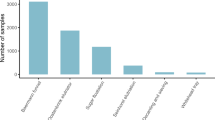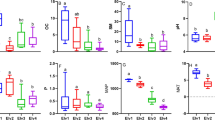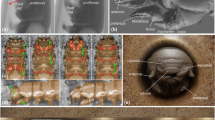Abstract
DURING the course of an investigation into the relations between earthworms and the fertility of the soil, it has been found necessary to study the biology of the several species found in grassland in some detail since, in spite of their natural abundance, possible importance and extreme commonness as a type in zoological classes, very little is known about their biology, distribution on different types of soil, seasonal activities, etc. One of the factors making such a study difficult has been the fact that the specific characters are largely based on the position of the clitellum and tubercula pubertatis, which only appear at the onset of sexual maturity. Thus in a representative sample of worms only a small proportion are identifiable.
This is a preview of subscription content, access via your institution
Access options
Subscribe to this journal
Receive 51 print issues and online access
$199.00 per year
only $3.90 per issue
Buy this article
- Purchase on SpringerLink
- Instant access to full article PDF
Prices may be subject to local taxes which are calculated during checkout
Similar content being viewed by others
References
Sun, K. H., and Pratt, K. C., Amer. Nat., 65, 31 (1931.
Author information
Authors and Affiliations
Rights and permissions
About this article
Cite this article
EVANS, A. Distribution of Number of Segments in Earthworms and its Significance. Nature 158, 98–99 (1946). https://doi.org/10.1038/158098c0
Issue Date:
DOI: https://doi.org/10.1038/158098c0
Comments
By submitting a comment you agree to abide by our Terms and Community Guidelines. If you find something abusive or that does not comply with our terms or guidelines please flag it as inappropriate.



